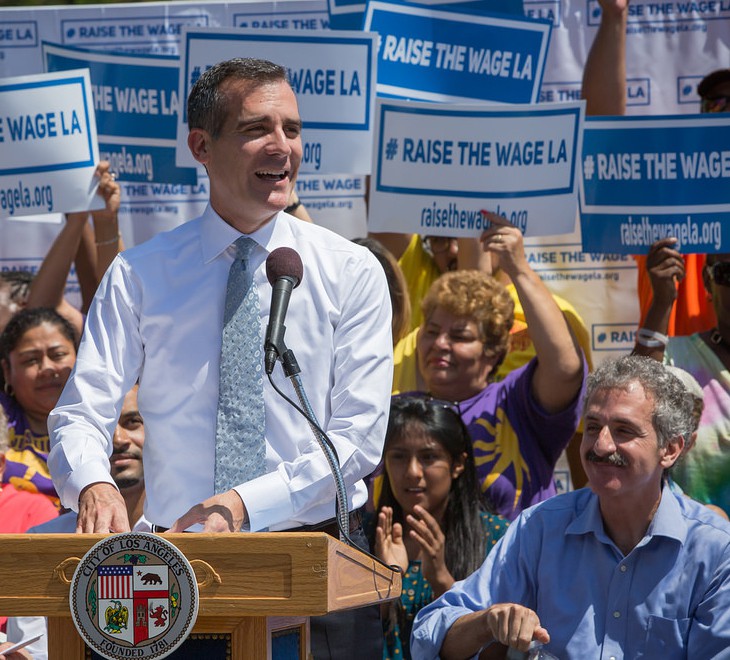FOR RELEASE ON MAY 11, 2015
CONTACT:
DANIEL FLAMING
danflaming@economicrt.org
213-892-8104 ext 204
SUSTAIN LOS ANGELES
Los Angeles Economy Operating at Unsafe Level for People and the Planet
New Report Provides Tools for Local Government to Take Action
LOS ANGELES, Ca. – Communities in Los Angeles County have a new set of tools for land use decisions and development policies that decrease greenhouse gas emissions and improve workers’ wages. A report by the Economic Roundtable, Industry Greenhouse Gas and Wage Sustainability released on Mother’s Day in honor of Mother Earth, identifies the climate change effects as well as the wage sustainability of jobs in each industry.
Scaling environmental impacts to a single job helps local government plan for industry growth that provides enough jobs for each community’s workforce while remaining under the ceiling for greenhouse gas emission set by federal, state, and local goals.
This baseline profile of Los Angeles County industries uses three dimensions of sustainability: greenhouse gas emissions, economic viability based on industry size and growth, and social sustainability based on wages for workers.
Humans burning fossil fuels have caused global climate change with disruptive consequences for the economy, water supply, transportation, agriculture, coastal communities, energy, ecosystems, and national security.
Concentrations of greenhouse gases in the global atmosphere surpassed 400 parts per million in March, according to the National Oceanic and Atmospheric Administration. The level considered “safe” for human life is 350 ppm.
Emission reduction targets for California and the U.S. converge on reducing greenhouse gas emissions by 83 percent in 2050. The report finds that Los Angeles has not made progress towards reducing emissions and energy consumption.
“Los Angeles’ future will emerge out of an economy shaped by both environmental and social realities,” said Daniel Flaming, president of the Economic Roundtable. “We need to provide jobs that support workers and also fit within the carrying capacity of the environment.”
Local government can help achieve goals for reducing greenhouse gas emissions through land use decisions and development policies that encourage an industry structure that adds growing value to the economy and employs growing numbers of workers while decreasing amounts of greenhouse gases released.
Key findings:
- Los Angeles County industries have not yet made visible progress in meeting the federal target for 2020 of reducing greenhouse gas emissions 17 percent below 2005 levels.
- The very highest levels of greenhouse gas emissions are from cornerstone industries that provide energy and movement essential for the economy – petroleum extraction and refining, electric power generation and distribution, air transportation, and trucking.
- The lowest wages are predominantly in routine service industries – retail, restaurants, hotels, and personal services.
- Customer trips are estimated to account for a metric ton or more annually of greenhouse gas emissions per employee in 20 major industries, and account for more emissions per job than establishment activities in 18 major industries.
- The long-term sustainability of all industries is dependent on cleaner sources of energy and higher levels of value added to the economy per unit of energy consumed.
Our recommendations:
- Invest in renewable energy.
- Reduce energy consumption through more efficient production processes.
- Raise the minimum wage so workers can pay for basic needs.
- Support growth of industries that have a light environmental footprint and pay sustaining wages to their workers.
The report was prepared for the California Energy Commission by the Economic Roundtable in collaboration with California Center for Sustainable Communities Research at UCLA.
The full study is available at: http://economicrt.org/publication/sustain-los-angeles
###













